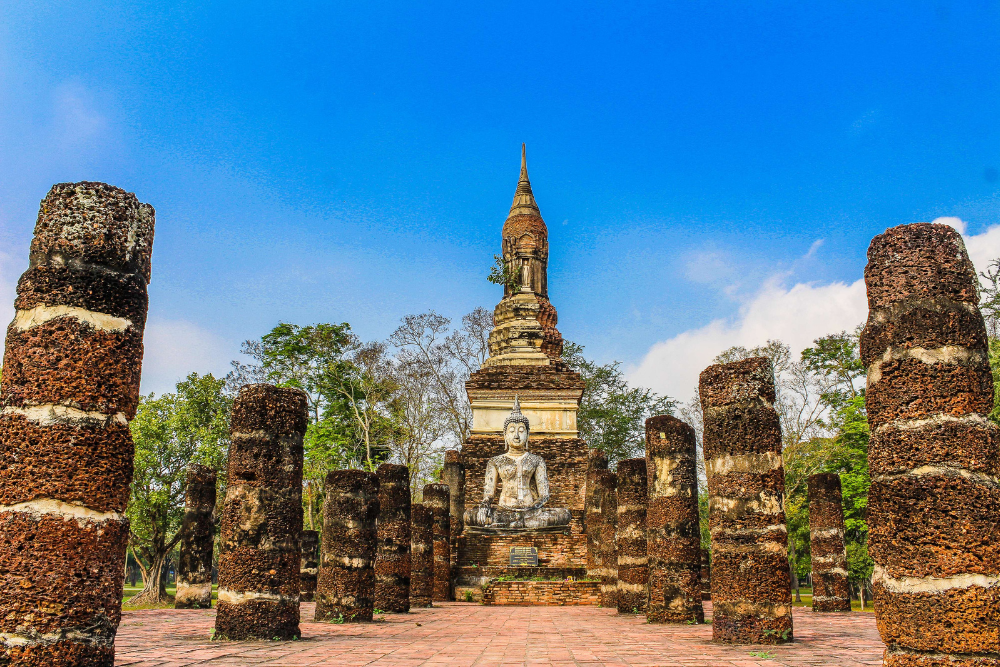Thailand is a land rich in history and culture, offering travelers a glimpse into its past through its stunning historical sites. From ancient temples and ruins to royal palaces and traditional villages, Thailand’s historical landmarks tell stories of its glorious past and enduring traditions. This guide will take you on a journey through some of the most remarkable historical sites in Thailand, each offering unique insights into the country’s heritage.
1. The Grand Palace, Bangkok
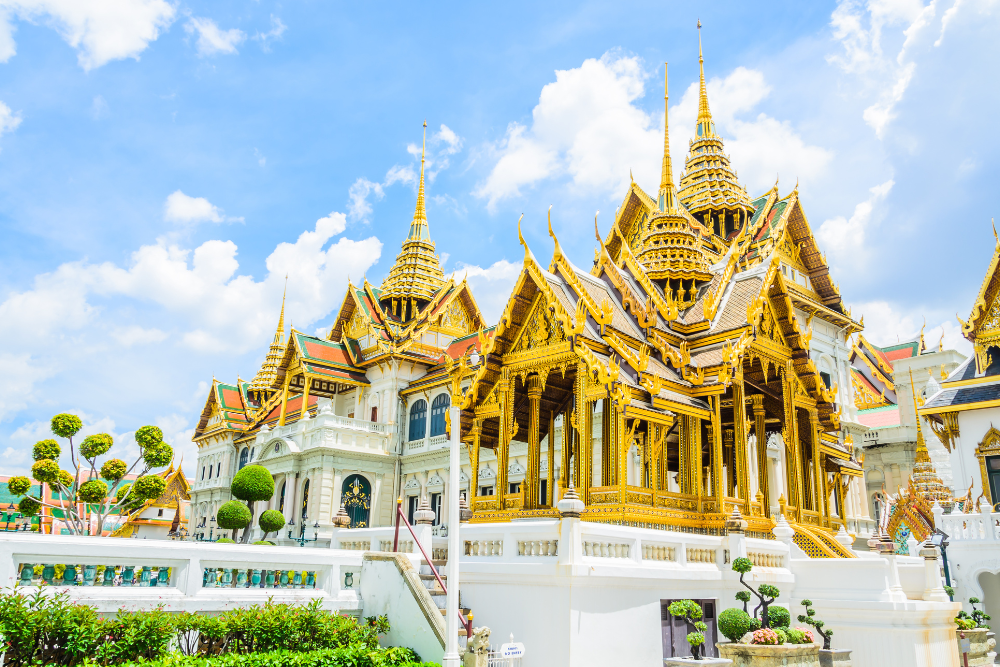
A Majestic Landmark
The Grand Palace is one of Thailand’s most iconic historical sites, located in the heart of Bangkok. Built in 1782, this majestic complex served as the official residence of the Kings of Siam. The intricate architecture and stunning decorations reflect the craftsmanship of the era.
Key Features
- Wat Phra Kaew: The Temple of the Emerald Buddha is housed within the Grand Palace grounds. It is one of the most revered Buddhist temples in Thailand and features a beautiful statue of the Emerald Buddha, which is dressed in different seasonal outfits.
- Chakri Maha Prasat Hall: This building showcases a blend of Thai and European architectural styles, representing the transition in Thai royal architecture.
Visiting Tips
- Dress Code: Visitors must adhere to a strict dress code, wearing long pants and sleeved shirts. No shorts or sleeveless tops are allowed.
- Timing: To avoid large crowds, try to visit early in the morning or late in the afternoon.
2. Ayutthaya Historical Park
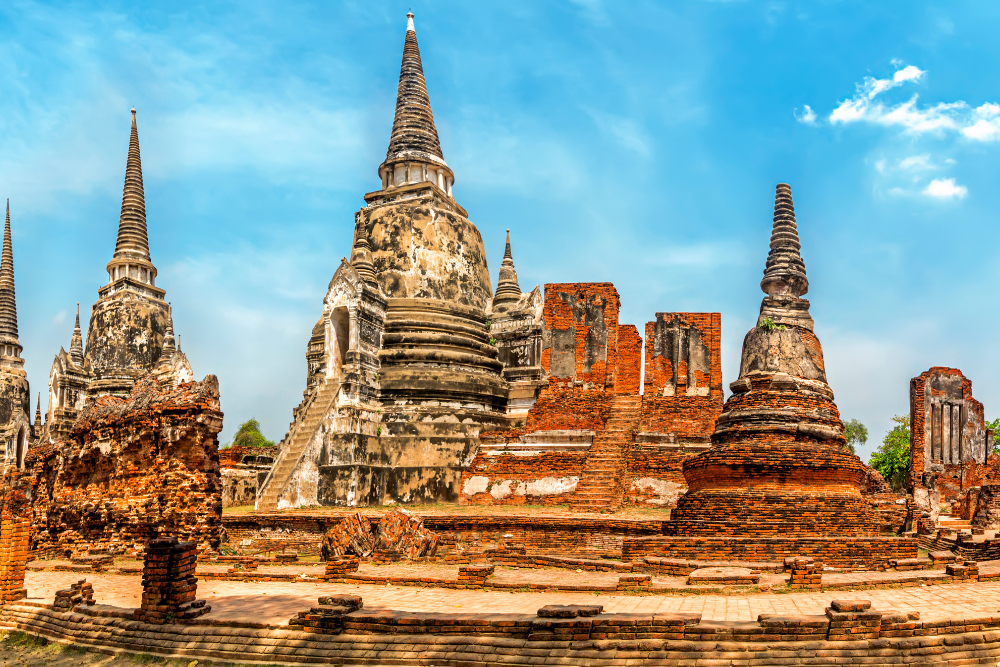
A UNESCO World Heritage Site
Ayutthaya, once the capital of the Kingdom of Siam, is now a UNESCO World Heritage Site. Founded in 1350, the city flourished for over 400 years before it was destroyed by the Burmese in 1767. Today, Ayutthaya’s impressive ruins offer a fascinating glimpse into the past.
Highlights of Ayutthaya
- Wat Mahathat: Famous for the Buddha head entwined in tree roots, this temple once housed relics of the Buddha and was an important religious center.
- Wat Phra Si Sanphet: The largest and most important temple in Ayutthaya, known for its three iconic chedis (stupas) that house the ashes of previous kings.
- Wat Chaiwatthanaram: This stunning temple complex, with its Khmer-style architecture, is located on the banks of the Chao Phraya River and offers breathtaking views, especially at sunset.
Exploring Ayutthaya
- Bicycle Rentals: Renting a bicycle is an excellent way to explore Ayutthaya. Many shops near the ruins offer affordable rentals, allowing you to visit multiple sites at your own pace.
- Guided Tours: Consider joining a guided tour to learn more about the history and significance of each temple.
3. Sukhothai Historical Park
The Birthplace of Thai Civilization
Sukhothai, another UNESCO World Heritage Site, is often regarded as the cradle of Thai civilization. Founded in the 13th century, it was the capital of the Sukhothai Kingdom and a center for art, culture, and politics.
Notable Temples
- Wat Mahathat: This temple, known for its impressive Buddha statues and lotus-bud chedis, served as the religious center of the city.
- Wat Si Chum: Famous for its enormous seated Buddha statue, Phra Achana, this temple showcases the exquisite artistry of the Sukhothai period.
- Wat Si Sawai: Known for its three Khmer-style prang (towers), this temple reflects the influence of neighboring civilizations on Thai architecture.
Exploring Sukhothai
- Walking and Biking Paths: Sukhothai Historical Park is bike-friendly, with paths connecting all major sites. Biking allows for a more immersive experience.
- Sunrise and Sunset Visits: The park is particularly beautiful at sunrise and sunset when the light casts a warm glow over the ruins.
4. Chiang Mai Old City
A Blend of History and Culture
Chiang Mai, the cultural capital of Northern Thailand, is rich in history, with a well-preserved Old City surrounded by ancient walls and moats. Founded in 1296, it served as the capital of the Lanna Kingdom.
Historical Highlights
- Wat Phra Singh: This temple is renowned for its beautiful Lanna architecture and houses a revered Buddha image, Phra Singh.
- Wat Chedi Luang: Once the tallest structure in Chiang Mai, this temple features a massive chedi (stupa) that dates back to the 14th century.
- Three Kings Monument: A symbol of Chiang Mai, this monument honors the three kings who played significant roles in the city’s history.
Experiencing Chiang Mai
- Walking Tours: Join a walking tour to explore the Old City’s temples and learn about its history and culture from knowledgeable guides.
- Local Markets: Visit local markets, such as the Saturday Night Market and the Sunday Walking Street, for handicrafts, street food, and cultural performances.
5. Kanchanaburi and the Death Railway
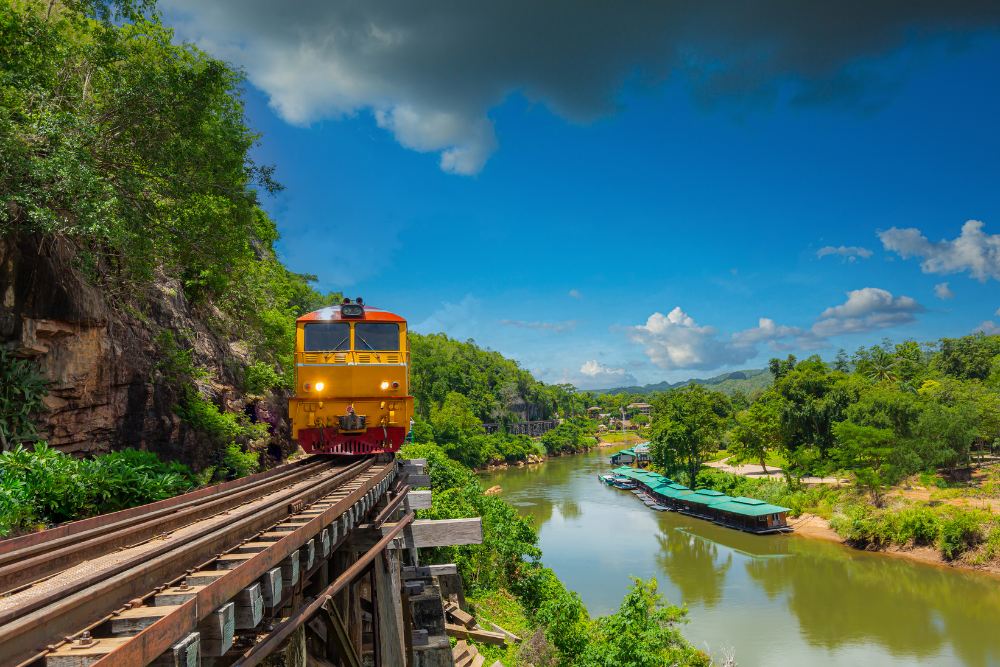
A Historical Journey
Kanchanaburi, located in western Thailand, is home to the infamous Death Railway, built during World War II. The railway connects Thailand to Burma and was constructed by Allied prisoners of war under harsh conditions.
Key Sites to Visit
- Hellfire Pass Memorial Museum: This museum offers insights into the construction of the railway and the hardships faced by the laborers. The adjacent trail allows you to walk through the actual pass.
- Bridge over the River Kwai: This iconic bridge, part of the Death Railway, is a popular tourist attraction. Visitors can walk across the bridge and enjoy views of the river and surrounding scenery.
- Erawan National Park: Just a short drive from Kanchanaburi, this park features stunning waterfalls and hiking trails, providing a perfect opportunity to relax and enjoy nature.
Tips for Kanchanaburi
- Guided Tours: Consider joining a guided tour to learn more about the historical significance of the Death Railway and the experiences of those involved.
- Transport Options: Kanchanaburi is accessible by train or bus from Bangkok, making it easy to visit as a day trip or overnight stay.
6. Phimai Historical Park
A Hidden Gem
Located in northeastern Thailand, Phimai Historical Park is one of the largest Khmer temple complexes in the country. Built in the 11th century, it served as an important religious center and showcases stunning Khmer architecture.
Notable Features
- Prasat Hin Phimai: The main temple features intricate carvings and a large central tower that symbolizes Mount Meru, the center of the universe in Hindu and Buddhist cosmology.
- Ancient Wall: The temple complex is surrounded by a well-preserved sandstone wall, providing a glimpse into its historical significance.
Visiting Phimai
- Accessibility: Phimai is accessible by bus from Nakhon Ratchasima, making it an easy day trip for those exploring the region.
- Less Crowded: Compared to other historical sites, Phimai offers a quieter experience, allowing for a more contemplative visit.
7. Lopburi’s Khmer Ruins
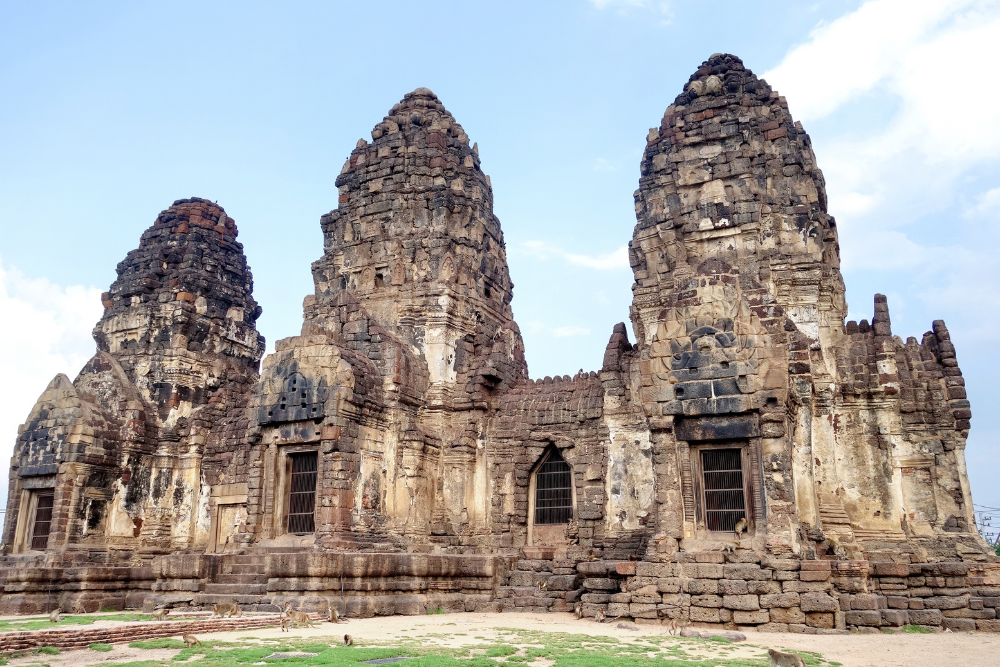
A Fascinating Mix of History and Nature
Lopburi, known for its monkey population, is home to several ancient Khmer ruins that showcase the region’s historical significance. The city served as an important center during the Khmer Empire.
Key Sites
- Phra Prang Sam Yot: This iconic temple features three prangs (towers) and is a prime example of Khmer architecture. It’s also known for the monkeys that inhabit the area.
- Wat Phra Si Ratana Mahathat: This temple is home to a large, impressive Buddha statue and offers a glimpse into the region’s past.
Exploring Lopburi
- Day Trips from Bangkok: Lopburi is easily accessible by train or bus, making it a popular day trip destination from Bangkok.
- Monkey Encounters: Be prepared for close encounters with the local monkey population, which can be both entertaining and mischievous.
8. Traditional Villages and Cultural Heritage

A Glimpse into Rural Life
Beyond the grand historical sites, Thailand is home to many traditional villages that offer insights into the country’s cultural heritage. These villages often preserve ancient customs and practices, allowing visitors to experience authentic Thai culture.
Notable Villages
- Ban Phu Pha Man (Northeast Thailand): This village is known for its traditional silk weaving. Visitors can learn about the weaving process and purchase beautiful silk products.
- Baan Tawai (Chiang Mai): Famous for its woodcarvings and handicrafts, Baan Tawai offers a chance to see artisans at work and purchase unique souvenirs.
Experiencing Traditional Life
- Participatory Activities: Many villages offer workshops and classes in traditional crafts, cooking, or farming, providing a hands-on experience of rural life.
- Homestays: Consider staying in a homestay to immerse yourself in the local culture and experience daily life firsthand.
Conclusion
Exploring Thailand’s historical sites offers a unique opportunity to connect with the country’s rich past and cultural heritage. From the grandeur of the Grand Palace and the ancient ruins of Ayutthaya to the serene beauty of traditional villages, each site tells a story that contributes to the vibrant tapestry of Thailand’s history.



